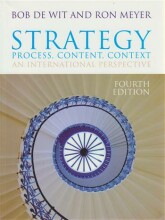RESOURCE DEPENDENCE & ORGANIZATIONAL ECOLOGY
5 important questions on RESOURCE DEPENDENCE & ORGANIZATIONAL ECOLOGY
Five ways to cope with uncertainty in RDT
2. Joint ventures -> Only partial absorption of resources to reduce uncertainty and interdependence
3. Boards of directors -> Provide information, access to channels of information, preferential access to resources, legitimacy
4. Political action -> “Firms actively seek to “create” their environment by trying to shape government regulations that produce a more favorable environment”
5. Executive succession ->Make sure CEO / executives can cope with environmental demands.
How can stakeholders be identified (three circles)
(2) the legitimacy of the stakeholder’s relationship
with the firm, and
(3) the urgency of the stakeholder’s claim on the
firm
Describe organization ecology
- Organizational ecology theory (earlier: population ecology) provides macro-level explanations for rates of organizational population change
- Organizational ecology doesn’t look at separate organizations but at ‘populations’ (groups of similar organizations)
- provides macro-level explanations for rates of organizational population change
- Starts with the assumption that organizations tend not to change internally once they are firmly established
- Higher grades + faster learning
- Never study anything twice
- 100% sure, 100% understanding
Criticism on Organizational Ecology
boundaries? What exactly constitutes birth and decay?
• How to keep track of the starting period?
• How about managerial discretion?
• Works with existing data / debate about precision
• Debate about formal logics involved
Core concepts Ecology Model
- POPULATION: all organizations of a given type (“population density”)
- INERTIA: inflexibility / difficulty to adapt to new environmental conditions
- DENSITY: total number of organizations in the population at time t
- LEGITIMATION: a specific organizational form becomes institutionalized / gains “constitutive legitimacy” (but also follow the rules!)
- COMPETITION: rivalry within an industry for resources
The question on the page originate from the summary of the following study material:
- A unique study and practice tool
- Never study anything twice again
- Get the grades you hope for
- 100% sure, 100% understanding































